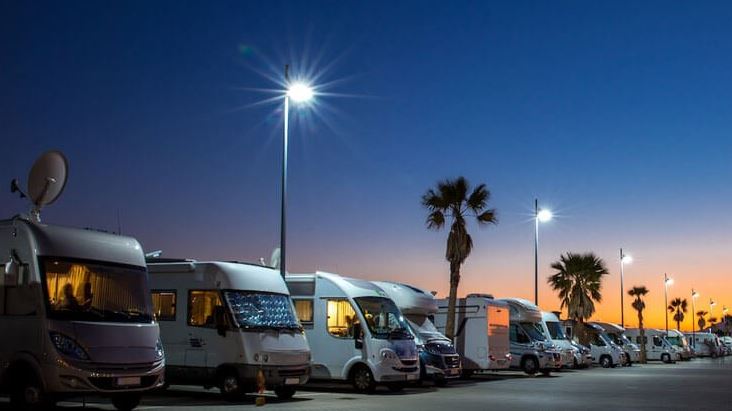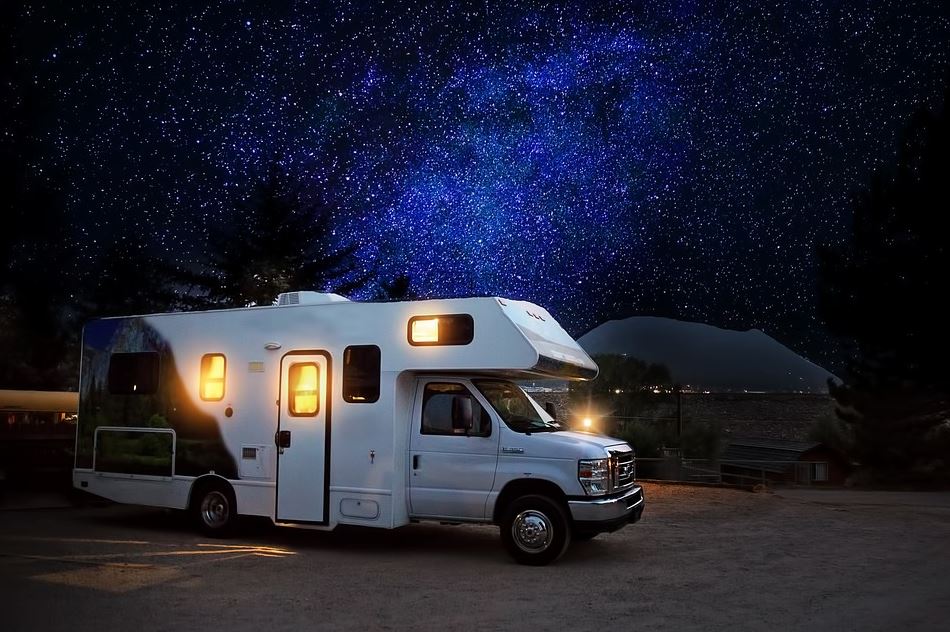Motor homes range from do-it-yourself camper vans to 200,000 dollar luxury apartments on wheels. A popular perception is that the industry is in decline due to the rise of short term vacation property rentals and the allure of exotic foreign travel.

In reality, RV sales have been growing steadily for the past decade, though there are several trends reshaping the industry. What is the future of motorhome and RV ownership? What will happen to the RV industry over the next few years?
-
The Steady Growth of the Industry
The RV and motorhome industry has often been classified as a luxury industry. For example, sales crashed during the 2007-2009 Great Recession. Sales fell from almost 400,000 units in 2006 to 165,000 in 2009. It took several years to recover because the economic recovery was slow under Obama. Sales didn’t match 2007 numbers until 2015.
However, growth has taken off since then. According to online motorhome dealer CavansForSale, in 2016, roughly 430,000 RVs and motor homes were sold. In 2017, half a million were sold. And demographic trends suggest that we will continue to see long-term growth in this area. One factor is the grey wave, the millions of Baby Boomers hitting retirement, and buying RVs to travel in.
Another is the growing adoption of RVs by younger adults. This is why the average RV owner is 35-50, not 70. The digital nomads living out of RVs today will probably continue to own RVs when they’re 60. That will keep the recreational vehicle industry going strong for decades. The projected market growth is expected to be 7 percent for the next five years.

-
The Higher Average Price Tag
The cost of nearly everything goes up with inflation. However, in the case of RVs and motor homes, the cost of the average recreational vehicle is increasing because of the greater expectations of buyers. It isn’t enough to have a popup with a bed and a cooktop.
People increasingly demand full bathrooms, built-in TVs, and generators that let them run a full suite of appliances. That means that the average RV’s price tag goes up, though you can still find cheap trailers for ten thousand dollars. “though you can still find cheap trailers for ten thousand dollars. Another rising industry of camping gear can already supplement the cheap RV – it’s the rooftop tents that are taking over the market.
Because there are many Baby Boomers buying RVs with cash to enjoy in their retirement, they’re demanding full amenities, too. They want full kitchens, large beds in the back, and a lot of little luxuries.
-
The Financial Impact of the Industry
The RV industry generates 50 billion dollars in economic impact in the United States and accounts for tens of thousands of jobs. According to the Department of Commerce, it also accounts for one billion dollars in exports.
It generates sales tax and other tax revenues for many different jurisdictions. This is leading to many officials taking steps to protect the industry.
-
The Growth of Hobbies that Drive Demand for RVs
Why do so many adults choose to own an RV? Camping is making a comeback as a family vacation of choice. However, they want to be able to sleep in air-conditioned comfort and run their smart devices while hitting the bathroom instead of digging a latrine.
Camping has the side benefit of being a safe form of travel. You don’t have to worry about terrorist attacks on tourists or exotic diseases. Many other popular hobbies generate demand for RV ownership. Mountain climbing, mountain biking, long-distance running in the wilderness, and others almost necessitates owning an RV.
One side effect of this is the demand for RVs that let you tow ATVs, mountain bikes, and other gear behind it if not on top of the RV. But for every issue, many fixes are there and some informative blogs are covering them as well like https://rvside.com/. RVers should bookmark these websites for getting help instantly from experts.
-
The Small House Trend
There is a small but passionate small house movement. Some of these small house owners are driven by their desire to live rent-free and reduce their monthly expenses. Maybe they want to ditch the mortgage and pay off their student loans.
Perhaps they want to live a more eco-friendly lifestyle, and a small house forces them to do more with less. RVs and motor homes are actually an ideal solution for this crowd. And the RV gives you more options for parking, storage, and long-term living.
You aren’t having to fight for rule carve-outs to set up a small house on the back corner of a friend’s lot, and you can easily pull into any RV park to stay.
-
The Evolution of Design Driven by Consumer Needs
The future of the RV is smaller and lighter. One reason is that most people don’t want to pay to store the RV in a storage facility, so it needs to be able to be parked in their garage.
Another reason is that most want to be able to pull the camper with their current vehicle instead of buying a truck to pull the trailer. Then there’s the fact that Millennials own most of the electric cars, and those can’t pull heavier camper trailers.
All of this led to the accelerating sales of pop-ups over full decked out RVs and the increased popularity of camper vans.
-
The Greening of the RV
Millennials have taken to camping as a frugal, environmentally friendly escape from everyday life. It lets them get close to nature. It is cheaper than international travel.
Furthermore, it uses less energy. The carbon footprint of an RV trip for a family of four to Yellowstone is lower than flying and staying there for a week. This same ethos is affecting RV design.
They want lighter trailers that require less gas to tow, and they love RVs that provide renewable energy via solar panels instead of relying on generators. Roughly 20 percent of RVers add solar panels to their vehicle.
Summary
The RV and motorhome industry is growing and changing in response to the extremes of the market – Millennials and Baby Boomers. This is altering the design and features in the average RV while expanding the range of products on the market. It also gives the RV industry a bright future.
Interesting related article: “Earn additional income renting out your campervan.”

